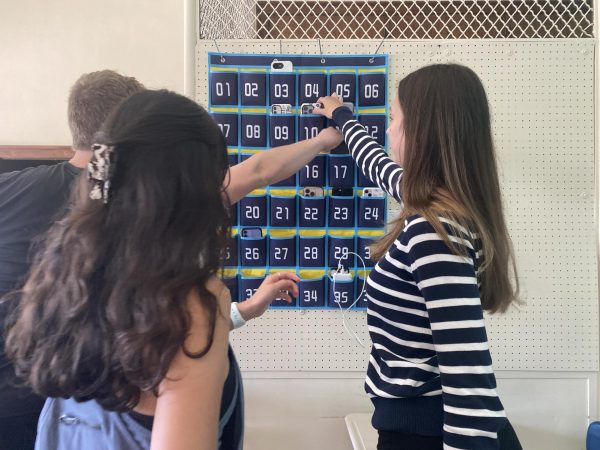A bunker from a bygone era
Hikmot Oshidele, Div. 060, a former member of JROTC, always thought that Lane’s basement was just a normal basement, complete with leaky pipes, pools of water on the floor and a chain link fence separating the JROTC section from the rest of the basement. Little did she know that beneath Lane is a relic of the Cold War, a fallout shelter designed to protect students from the radioactive fallout resulting from a nuclear attack.
Mr. Ara, assistant principal, said because Lane is such a large building, there needed to be a safe place for students to go in case of a nuclear attack.
According to an article from Dec. 4, 1967, in the Lane Daily, when Lane was built in the 1930s, the fallout shelter was not there. The shelter was built sometime after the initial construction.
The shelter contained, at one time, 300 drums of water and a large amount of non-perishable food like crackers, jam and canned foods. The shelter also stored medical kits, survival kits and sanitation kits, according to the Lane Daily article.
The materials in the fallout shelter were provided by the U.S. Department of Defense, according to former teacher, Mr. Peisker. The survival materials were put into the shelter sometime between the late 1940s and early 1960s. The shelter would have been operational for at least part of the Cold War.
According to Peisker, most of the food in Lane’s fallout shelter had already perished by the late 1960s.
The entire basement has a capacity of 1,500, so the entire population of Lane could not fit into the shelter, according to the Lane Daily article.
In the case of an actual nuclear fallout, the school would also use the auditorium, the science laboratories, and some of the first-floor hallways, according to the article. The rest of the school, including the entirety of the second, third and fourth floors would be too dangerous to take shelter in due to the windows, as well as the construction of the building.
The basement is not currently fit to house students.
“Currently, we’re not allowed to have any students in the basement,” Ara said. “It’s only for engineers and custodians. So no student access to it, it’s not going to be used.”
The portion of the building above the ground would be especially dangerous in the event of a nuclear attack because the resulting radiation could easily penetrate through the school’s windows, according to the Lane Daily.
“The basement entrances are very limited, and it probably would take hours for every student to crowd into the basement,” Peisker said.
He also said that Lane never practiced any type of drills for the fallout shelter.
According to the Lane Daily article, the fallout shelter lacked an air filtration system, meaning that if the school’s ventilation system was attacked, the students in the fallout shelter would eventually run out of air.
Today, not much remains of the shelter. The only evidence that survives of the fallout shelter outside of the basement are the signs for the shelter on the first floor of the building.
According to Mr. Ara, the shelter is not currently being maintained.
“The only thing I’ve seen that would be remnants of it once being a fallout shelter was some old packages of emergency kits and water,” Ara said.
With the end of the Cold War and the threat of nuclear war a distant memory, many of Lane’s students, like Amira Imperial, Div. 050, were unaware of Lane’s nuclear fallout shelter.
“I didn’t know Lane had a fallout shelter,” Imperial said. “It would be a cool thing for a school to have and it would be really useful.”
Your donations directly fund the Lane Tech student journalism program—covering essential costs like website hosting and technology not supported by our school or district. Your generosity empowers our student reporters to investigate, write, and publish impactful stories that matter to our school community.
This website is more than a publishing platform—it's an archive, a research tool, and a source of truth. Every dollar helps us preserve and grow this resource so future students can learn from and build on the work being done today.
Thank you for supporting the next generation of journalists at Lane Tech College Prep!

Sophia is currently a Senior at Lane Tech. This is her second year in journalism and her first as an editor. She has a passion for politics and follows...



